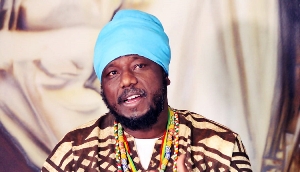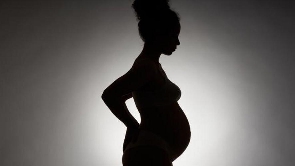According to di Bible, Eve na di first woman in history together wit Adam, na from him all human being come from. Science use dat, for at least four decades now, dem take di same name to describe one tin wey dey happun for di genetic material wey we carry inside all our cells.
But, di opposite of di tori inside bible, na di "scientific" Eve (or mitochondrial Eve, as sabi pipo go call am) na di latest common ancestor of all man; make we keep dis word "most recent" for mind, as e dey important to understand wetin e really mean.
From wetin we know so far, she bin live 150,000 to 200,000 years ago for di region we know today as Zimbabwe and Botswana, for southern Africa.
E dey important to know say she no be di first woman in history, or even di only woman dat time. But, due to a number of factors, one small piece of her DNA dey appear for every generation of humans afta she die, according to research wey dem don publish so far.
To understand dis story, e dey necessary to calm down learn di details of one very odd structure for our body wey dem dey call: di mitochondria.
Microscopic energy generator
All human being cells get one structure wey dem dey call mitochondria.
"Di mitochondrion na im dey produce energy," na so biologist Gabriela Cybis, professor for di Department of Statistics of di Federal University of Rio Grande do Sul (UFRGS) take explain am.
Na dis structure dey in charge of converting sugar from food into ATP molecules, one kind of "common currency" of energy wey our body dey use to function.
And these mini-generators get a unique feature: dem carry dia own DNA.
Di genome, dey made up of 20,000 different genes and na im dey responsible to determine a large part of our characteristics and tendency to disease, dey stored for di cell nucleus.
Di mitochondria, wey dey inside di cell but outside di nucleus, get 37 genes of dia own. Scientists know dem as mitochondrial DNA (or mtDNA).
Dis na wia di tori go make make you ask plenty kwesion. We inherit mtDNA exclusively from our mama.
During fertilization, wen di egg and di sperm meet, di mitochondria of di male gamete go disappear for di process of fusion between di two cells.
E mean say, di embryo only dey formed by mitochondria of di maternal origin.
So dis information make am possible to establish di existence of an uninterrupted offspring formed only by females ova many generations and thousands of years, wey dey connected by mtDNA.
After all, every daughter get mama. But not every mama get daughter: if di woman get only male babies (or no born pikin), her mtDNA no go pass on to her future grandchildren.
"Therefore, for genetic terms, e dey possible to trace who di mama mama be, dia mama, mama be, and dia mama mama be... And so on," Cybis point out.
Tree wey get branches
Di technology don advance on di knowledge of genetics and for gene sequencing and processing sotay e don scientists now fit reconstruct di origins of mtDNA.
Biologist Bibiana Fam, from di Laboratory of Genomic Medicine for di Hospital de Clínicas for Porto Alegre, explains say di first papers on di most recent common ancestor of all of us na 1980s dem published am.
According to her, dis papers bin keep di date of di most recent common ancestor. At di same time, di first time wey dem use di word "mitochondrial Eve" e bin appear: dat time and dem still dey use am today, even wit di confusion sake of di concept inside bible.
Although di experts agree on di concept of mitochondrial Eve (i.e. one more recent common ancestor, wey dem estimate say come from genetic sequencing calculations), di date of wen she bin live dem still dey argue dat one: di range of the most reliable projections still vary by more than 50,000 years.
By di way di use of di name "Eve" in dis way, na another tin wey some researchers dey criticize. According to dem e dey create confusion between scientific concepts and biblical myths, e don lead to di confusion to sell di idea to di public.
Dem don raise dis issue since dem publish di first papers for di area for late 1980s: one article for specialized journal Science bin torchlight "trail of confusion" wey dey related to studies for dis field.
Geneticist Tábita Hünemeier, of di Department of Genetics and Evolutionary Biology for di Institute of Biosciences of di University of São Paulo (USP), say di use of di first name in dat kind of way na kind of "poetic license."
"But di idea dey completely based on scientific evidence and e no get anytin to do wit di Bible," she tok.
In practical terms, to restore di past, di experts perform a reverse account. Dem sequence di mtDNA of various individuals around di world and, wit di help of computers, dem compare di information and mutations wey dem find for dis material.
Scientists don learn to estimate how long e go take for these genetic mutations to appear ova different generations.
"Dis allowed us to calculate dis 'molecular clock' and understand better how long e take for di mutations wey dem observe for di mitochondrial DNA to occur," Fam tok.
From this, e dey possible to calculate say mitochondrial Eve fit don live for southern Africa between 150,00 and 200,000 years ago.
Dis na im forms di "original" trunk of di huge genetic tree: pesin dey carry dis mtDNA wey dem classified in some articles as L or L0.
Afta you go see say, di mtDNA of different generations go gradually begin to change.
For example: in oda parts of Africa, dem find haplogroups L1, L2, L3...etc..
As our ancestors move to oda continents, more mtDNA variety begin appear. In some parts of Middle East and Europe, di H, V and R "branches", dey among oda, predominate.
For Americas, groups A, B, C and D dey frequently observed.
Di study of mtDNA, , no only help to solve wia we come from, but also allows us to reconstruct di path of our ancestors (or rather, female ancestors) around di world ova hundreds of thousands of years.
"Wetin we get now, then, na a common ancestor wey carry one mtDNA from which all di oda mtDNAs exist from today," Hünemeier summarize.
"We no dey tok about di same mtDNA for everybody, but about our lineage dem wey don bring together sets of mutations wey don change ova time," e add put.
Controversies and confusions
Make clear di issue: mitochondrial Eve no be di first woman for history.
Many oda generations before her, like her mother, grandmothers and great-grandmothers and, ova millions and millions of years of evolution, ancestors of oda species from which Homo sapiens come out from.
"E fit dey clear say at some point, if we continue to do dis reverse math, we go get to our most recent common ancestors wey no be Homo sapiens, but some oda hominid," Cybis points out.
And, as we explained before, mitochondrial Eve no be di only pesin of her time either. E dey possible say oda women bin dey live for di same place.
Di point be say, as millennia dey pass, these oda mtDNAs fade.
Dis happun because, in certain generations, women wit different mtDNA no born, or na sons dem born, dis interrupt di "transmission" of dia genetic material.
Cybis believe say, becos dis mata involve thousands and thousands of years, di calculation and projections wey dem don publish so far get comma.
"But by far, di information we get today on mitochondrial Eve na our best estimate," she tok.
"And you need to add di movement and demographic processes of humans dey very complex," Hünemeier agree.
BBC Pidgin of Monday, 17 July 2023
Source: BBC
Mitochondrial Eve - Di evidence and controversies of "di mama of all women"
Entertainment















